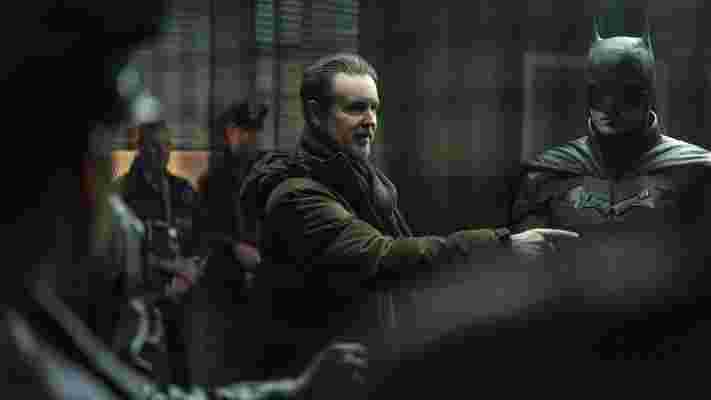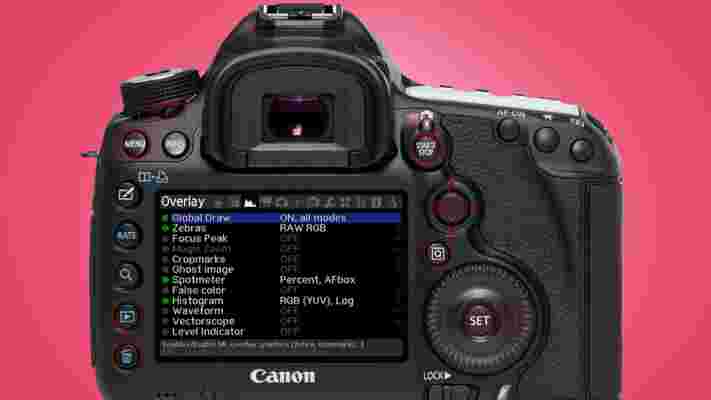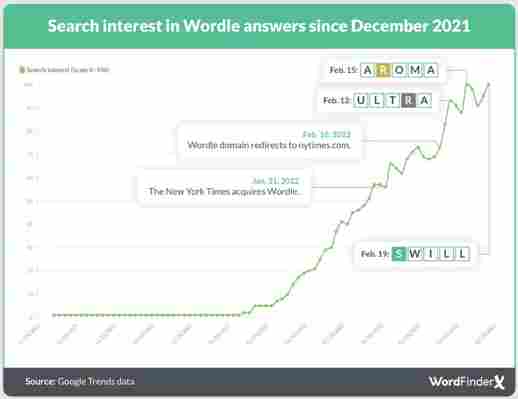The Batman's Matt Reeves has revealed which iconic horror director was the biggest influence on the film's scariest scenes.
Speaking exclusively to TechRadar ahead of the DCEU movie 's release, Reeves confirmed that the Dark Knight's latest big-screen adventure was heavily inspired by Alfred Hitchcock.
Given the legendary filmmaker's influence on cinema production as a whole, it's unsurprising that the 'Master of Suspense' was a big influence on The Batman . After all, the Caped Crusader's newest incarnation is a neo-noir detective story – albeit a superhero movie at heart – packed with suspense, tension, and horror genre sensibilities.
For Reeves, it was Hitchcock's exploration of the so-called 'double' – a theme where an individual's personality is torn between order and chaos, or the light and dark side of humanity – that shaped the film's character study of Batman and the Riddler. That, in turn, helped to bring a sense of horror and existential dread to proceedings.
"From the beginning, I wanted the movie to have a Hitchcockian subjectivity," The Batman director said. "I wanted to put the audience in the perspective of Batman of the characters. And so everything was incredibly driven by this sense of perspective of seeing things the way they would see things, and then also the idea of what you couldn't quite see.
"There's so many times when Batman comes out of the shadows, or with the Riddler doing what he's doing, that it almost becomes a horror movie. In a way, the masks create a relationship between you and your shadow side, right? Like, Batman is in this very instinctive place. So, visually, it was very important to me that everything feel very kind of subjective, visceral, and uncanny."

That "visceral and uncanny" feeling is present in a number of Hitchcock's best works, most notably through the distinguished filmmaker's use of camera angles, shots, and other cinematographic elements. And, as Reeves reveals, The Batman honors Hitchcock's own filmmaking style with its use of close-up shots, scenes lacking in spoken dialogue, and showing less of what's happening on the screen.
"We knew that we wanted to shoot in anamorphic [format], as one of the things I love about anamorphic is the focus fall off," Reeves said. "That means the part of the image you want to be sharp is sharp, but much of it is soft focused, so it almost feels like a dream.
"For instance, there's a scene where the Riddler is attacking someone, and the whole thing is out of focus – it's almost like an eerie dream. So all of that sort of drove the the placement of the camera and the sense of how shallow focus might be, so audiences would be engaged in a way that they can sort of see what's happening on screen, but large parts of certain scenes are blurred out. And I think that lends a subtle fear and terror to our movie."
In our spoiler-free review , we picked up on The Batman's Hitchcockian aesthetic, saying the movie is "a stunningly meticulous and tension-filled DCEU movie that doesn't lose sight of the iconic vigilante's comic book roots" that blends "detective noir, horror, and psychological thriller" elements that the legendary filmmaker was renowned for.
For more content surrounding The Batman, check out our exclusive chat with star Colin Farrell , who revealed more about his Penguin TV show that spins off The Batman. Alternatively, read up on our rankings of every Batman film ever . And be sure to visit TechRadar later this week when we'll have more Batman coverage to share with you.
Nikon Z9's 'cat meow' shutter makes me wish all cameras were this much fun
Cameras aren't exactly known for their humor, but a demo of the Nikon Z9 's 'cat meow' shutter sound at CP+ 2022 shows how badly they need more smartphone-style customizability.
As spotted by Nikon Rumors , Nikon introduced a beta firmware for new shutter sounds on the Z9, which included a kitten's meowing sound. Cue lots of heated forum discussions about what sound everyone wants their camera to make (an Austin Powers "yeah, baby!" appears to be the front-runner).
The feature is largely pointless, gimmicky and completely out of step with a professional sports camera. But that's also the point – the fact that it stood out so clearly, and probably generated more discussion than Nikon's new Z 800mm f/6.3 VR S lens, shows there's an appetite for way more personalization in cameras.

My Fujifilm X-T4 contains three electronic shutter sounds, which are all variations on a tinny click. Alongside the Nikon Z9's cat meow sound, the firmware also offers retro shutter sounds for the Nikon D750 and Nikon F4 DSLRs, alongside the option of using a voice recording.
The 'cat meow' sound also shouldn't be dismissed as complete marketing fluff. A family portrait photographer, for example, might find it a useful tool to lighten the mood and get some beaming smiles from kids. The point is that customizations, like we're used to seeing on Android phones, can spark use cases that are unimaginable when everything is locked down.
That's why Nikon says it's actively considering giving its custom shutter sounds feature a wider rollout. It also got me thinking about what other customizations cameras should start offering to give smartphone users a softer landing when they switch to a more 'serious' camera.
Straight shooters
Right now, most cameras – even the latest mirrorless bodies – are about as customizable as a 1980s VHS player. This is partly a result of smartphones hoovering up the beginner and even amateur photographer market, which has pushed standalone cameras further into the professional realm.
But it's also a hangover from the camera giants' past. Neither Nikon or Canon have a long history in software development, and even Sony has only recently tidied up its labyrinthine touchscreen menus. We're not talking a complete camera UI redesign or Android launchers here, though – just some more custom flourishes in the spirit of the Nikon Z9's meowing shutter.

The frustration with rigid camera software has boiled over in the past. Just over a decade ago, a fan managed to reverse engineer the Canon EOS 5D Mark II 's firmware to create Magic Lantern – a software add-on that helped unlock its video-shooting talents and turned it into a classic for amateur filmmakers.
Because Magic Lantern doesn't replace or modify Canon's own firmware, instead running alongside it from a memory card, it's legal and relatively risk-free. But Canon has never engaged with or even mentioned Magic Lantern. While I'm not expecting Canon or Nikon to release an open-source camera, it would be nice to see some more engagement with fans in the smartphone era – and some of that customizable fun baked into their dated, straight-laced software.
Today, it's possible to rejig the order of your camera settings or shortcut menus on most cameras, but that's about it. How about letting camera users rename functions from arcane acronyms like AF-C, ISO and MS to ones that they'd personally remember? Or even choose from a selection of text and graphic styles that fit their taste? That'd be a start, but there's so much more that software could unlock.
Phone-style fun
For example, what if cameras came with a pared-down version of Pokemon Snap that ran in their electronic viewfinders? Sure, it wouldn't be used by pro photographers, but they could pass the camera to family members and help them quickly develop the muscle memory needed to shoot in manual mode.
Realistically, this is probably asking a bit too much of the traditional camera manufacturers. After all, they're a little bit side-tracked with their battle for survival in the professional full-frame space.

But Nikon's CP+ 2022 demo shows that some simple, fun features can generate debate that puts cameras at least somewhere in the vicinity of popular culture. And new players like Alice Camera and Pixii Camera have an opportunity to innovate in this space, if they can gain a foothold in the market.
I recently argued that the OM System OM-1 could be the world's most fun camera thanks to its software innovations. Cat meow shutter sounds might not win Nikon prestigious photography awards, but features like that could win over fans who are looking for a bit more personalization than third-party camera straps or hand-carved shutter buttons.
Everyone is cheating on Wordle, report claims – is The New York Times to blame?
A new study claims we're all cheating on Wordle after noticing that Google searches for "today's wordle" rose 196% since The New York Times acquired the word-guessing game.
The report comes from WordFinder, a word puzzle site that helps word-game fans find answers for games like Scrabble, Words with Friends, and Wordle.
The chart, which we've embedded below, does appear (at least initially) to offer compelling evidence. Look at how that fever line rose since January of this year. After The New York Times acquisition in late January, the trend of people searching for "today's wordle" continues its bumpy climb

Difficult words like SWILL and AROMA saw notable spikes in people giving in and searching Google for the result. They might have done so with today's ( Wordle #255 ) brain twister.
Looked at another way, though, we see evidence of something completely different.
The trajectory of the rise, which started when Wordle gained international prominence, has, to our eyes, not changed at all. The spikiness, though is something new. There are more peaks and valleys after The New York Times's purchase, which might bolster claims that the newspaper and media company (and Sunday Crossword Puzzle generator) has, in fact, been making the game harder. Those peaks represent harder words and more searches for answers.
Before The Times, the trend line is a smooth rise. After, it's jaggier than the Himalayas.
This is only one company's interpretation of search data and should not be used to extrapolate how the whole world plays Wordle. Still, it is surprising to see how many people do give up and, how The New York Times might've done more than just remove obsure and UK-centric words from the game. It might've been making Wordle a little harder, too.
The report does offer some other Google Search trends findings, including that people are early-morning Wordlers, with most of the result searchers ("cheaters") giving up between 7 and 8 AM in the morning. A lot of these people live in the state of New Hampshire: Live free or Wordle, indeed.
